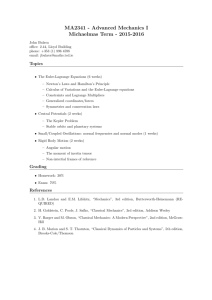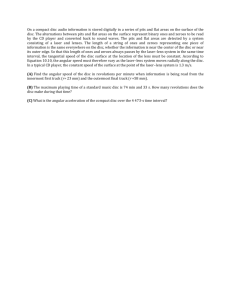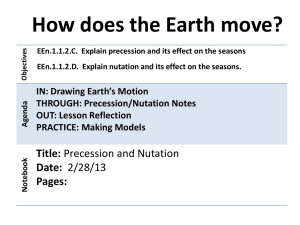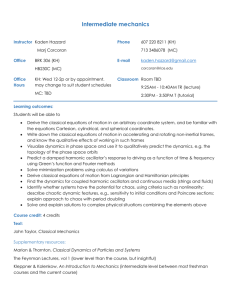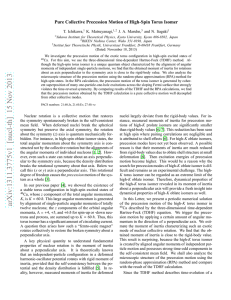Sheet 5
advertisement
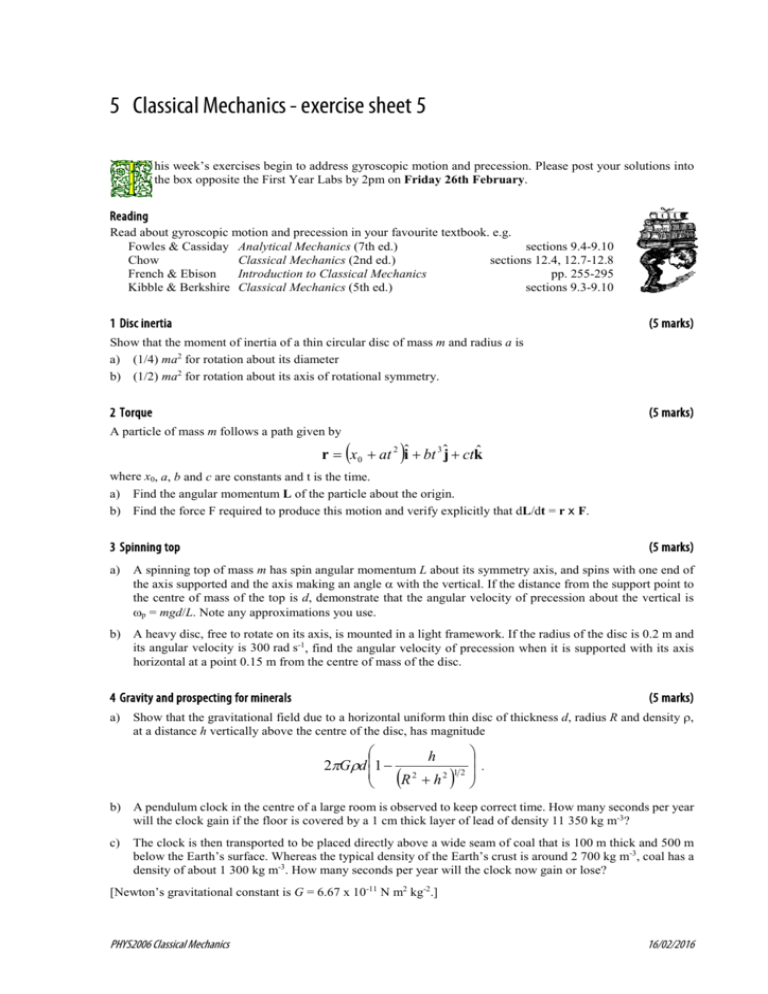
5 Classical Mechanics - exercise sheet 5 his week’s exercises begin to address gyroscopic motion and precession. Please post your solutions into the box opposite the First Year Labs by 2pm on Friday 26th February. Reading Read about gyroscopic motion and precession in your favourite textbook. e.g. Fowles & Cassiday Analytical Mechanics (7th ed.) sections 9.4-9.10 Chow Classical Mechanics (2nd ed.) sections 12.4, 12.7-12.8 French & Ebison Introduction to Classical Mechanics pp. 255-295 Kibble & Berkshire Classical Mechanics (5th ed.) sections 9.3-9.10 1 Disc inertia (5 marks) Show that the moment of inertia of a thin circular disc of mass m and radius a is a) (1/4) ma2 for rotation about its diameter b) (1/2) ma2 for rotation about its axis of rotational symmetry. 2 Torque (5 marks) A particle of mass m follows a path given by ( ) r = x0 + at 2 ˆi + bt 3 ˆj + ctkˆ where x0, a, b and c are constants and t is the time. a) Find the angular momentum L of the particle about the origin. b) Find the force F required to produce this motion and verify explicitly that dL/dt = r x F. 3 Spinning top a) (5 marks) A spinning top of mass m has spin angular momentum L about its symmetry axis, and spins with one end of the axis supported and the axis making an angle α with the vertical. If the distance from the support point to the centre of mass of the top is d, demonstrate that the angular velocity of precession about the vertical is ωp = mgd/L. Note any approximations you use. b) A heavy disc, free to rotate on its axis, is mounted in a light framework. If the radius of the disc is 0.2 m and its angular velocity is 300 rad s-1, find the angular velocity of precession when it is supported with its axis horizontal at a point 0.15 m from the centre of mass of the disc. 4 Gravity and prospecting for minerals a) (5 marks) Show that the gravitational field due to a horizontal uniform thin disc of thickness d, radius R and density ρ, at a distance h vertically above the centre of the disc, has magnitude h 2πGρd 1 − R2 + h2 ( ) 12 . b) A pendulum clock in the centre of a large room is observed to keep correct time. How many seconds per year will the clock gain if the floor is covered by a 1 cm thick layer of lead of density 11 350 kg m-3? c) The clock is then transported to be placed directly above a wide seam of coal that is 100 m thick and 500 m below the Earth’s surface. Whereas the typical density of the Earth’s crust is around 2 700 kg m-3, coal has a density of about 1 300 kg m-3. How many seconds per year will the clock now gain or lose? [Newton’s gravitational constant is G = 6.67 x 10-11 N m2 kg-2.] PHYS2006 Classical Mechanics 16/02/2016
